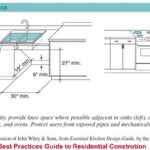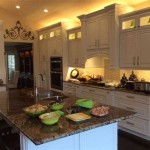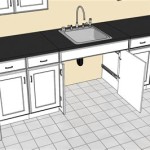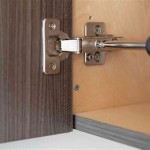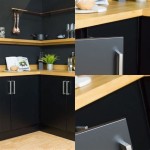Adjusting Häfele Kitchen Cabinet Hinges: A Comprehensive Guide
Häfele is a renowned name in kitchen hardware, known for its quality and durability. Their cabinet hinges are no exception, offering a variety of adjustments to ensure perfect door alignment and functionality. Understanding how to adjust these hinges can save homeowners time and frustration, allowing them to easily rectify common issues like crooked doors, uneven gaps, and binding hinges.
Understanding Häfele Hinge Types
Before delving into the adjustment process, it's crucial to identify the type of Häfele hinge installed on your cabinets. Different hinge types offer different adjustment mechanisms. While the basic principles remain similar, slight variations exist. Common Häfele hinge types include concealed hinges (cup hinges), surface mount hinges, and specialty hinges like pie-cut corner hinges.
Tools Required for Adjustment
Having the right tools on hand simplifies the adjustment process. Typically, a Phillips head screwdriver is sufficient for most Häfele hinge adjustments. Some hinges may require a specific size screwdriver, so it's recommended to check the hinge documentation. A small level can also be helpful for ensuring proper alignment.
Locating the Adjustment Screws
Häfele concealed hinges, the most common type, have three adjustment screws. These screws control the vertical, horizontal, and depth positioning of the cabinet door. They are typically located on the hinge arm attached to the cabinet frame. The exact location may vary depending on the specific hinge model.
Vertical Adjustment
The vertical adjustment screw controls the up-and-down movement of the cabinet door. This adjustment is used to align the top and bottom edges of adjacent doors. Turning the screw clockwise raises the door, while turning it counterclockwise lowers it. Small adjustments are recommended, checking the alignment after each turn.
Horizontal Adjustment
The horizontal adjustment screw controls the inward and outward movement of the cabinet door. This adjustment is used to correct the gap between the door and the cabinet frame. Turning the screw clockwise moves the door inward, while turning it counterclockwise moves it outward. This adjustment is particularly helpful for resolving issues with doors rubbing against each other or the cabinet frame.
Depth Adjustment
The depth adjustment screw controls the distance between the door and the cabinet side panel. This adjustment is used to ensure the door sits flush with the cabinet frame. Turning the screw clockwise moves the door closer to the cabinet frame, while turning it counterclockwise moves it further away. This adjustment can also help to rectify issues with binding hinges.
Troubleshooting Common Issues
Several common issues can be resolved through hinge adjustments. If a door is sagging, the vertical adjustment can be used to raise it. If a door is rubbing against an adjacent door, the horizontal adjustment can be used to create proper spacing. If a door is not closing properly, the depth adjustment may be necessary.
Maintaining Your Häfele Hinges
Regular maintenance can extend the life of your Häfele hinges. Periodically checking the screws for tightness can prevent issues from developing. Additionally, lubricating the hinges with a suitable lubricant can ensure smooth operation and prevent wear and tear.
Referencing Häfele's Resources
Häfele provides extensive resources, including installation instructions and technical documentation, for their products. If you encounter difficulty adjusting your hinges or have questions about a specific model, consulting these resources can provide valuable guidance. Many of these resources are available on the Häfele website.
Safety Precautions
When working with hinges and other hardware, it is important to exercise caution. Be mindful of sharp edges and moving parts. If unsure about any aspect of the adjustment process, it is always best to consult a qualified professional. Taking proper safety precautions can prevent injuries and ensure a successful adjustment.
Dealing with Stubborn Hinges
Sometimes, hinge screws can become seized due to paint buildup or corrosion. If a screw is difficult to turn, applying a penetrating oil can help to loosen it. Allow the oil to penetrate for a few minutes before attempting to turn the screw again. Excessive force should be avoided as it can damage the hinge or the cabinet.
Beyond Basic Adjustments
While the standard adjustments cover most scenarios, some situations might require more advanced techniques. This might include addressing issues with warped doors or significant misalignments in the cabinet frame itself. In such cases, it is recommended to consult a professional carpenter or cabinet installer for assistance.
When to Replace Hinges
Hinges, despite their durability, can eventually wear out. Signs of worn-out hinges include excessive play, inability to hold adjustments, or visible damage. In these cases, replacing the hinge is often the most effective solution. Ensure you purchase the correct replacement hinge model for compatibility.

Concealed Hinges Hafele

Cabinet Hinges Door Häfele

Cabinet Hinges Door Häfele

Cabinet Hinges Door Häfele

Cabinet Hinges Door Häfele

Hafele Concealed 110 Hinge Plate Full Half Inset Mounting Kitchen Cabinet

Hafele Concealed Kitchen Door Cabinet Hinge 110 Half Overlay Mounting Plate

Hafele On Soft Close Hinge 110 Toolstation

Hafele 110º Series 200 Hinges Home

Glass Door Hinge Aximat 230 Deg Opening Angle To Wood Inset Hafele
Related Posts

